Review: HTC One max
Oct 15, 2013, 11:16 AM by Eric M. Zeman
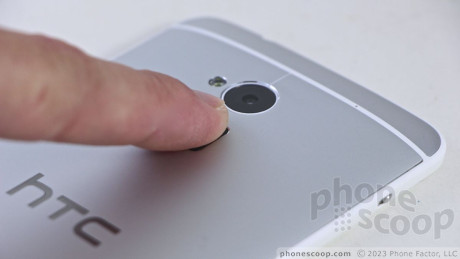
HTC takes the One series to its logical conclusion with the One max, an Android smartphone meant for two hands and not one.
Form
Is It Your Type?
A device such as the HTC One max is only for those who want or need a phone with the biggest screen possible. The footprint is outrageously huge and the phone requires two hands for even the most simple tasks. But hey, if you live by the "bigger is better" mantra and want one device (HTC max) instead of two (phone+tablet), then perhaps the One max is what you're seeking.
Body
HTC has taken its One series to the logical conclusion with the One max. HTC started the year with the One, a smartphone with a now-standard 4.8-inch screen, and followed it several months ago with the One mini, which had a smaller, 4.3-inch screen. The One max is nearly tablet-sized with its 5.9-inch screen. All three devices share the same design language and basic appearance, but there are important, distinctive differences that give the max its own identity.
The max is more like the mini than the One. The front and back have aluminum panels, but the device is built around a polycarbonate frame that holds everything together. It doesn't have the glistening chamfered bezels on the One, nor the injected plastic molding, nor the refined finish of HTC's flagship phone. It does have the dual BoomSound speaker setup, with grills above and below the screen that extend the already large footprint even further. The white plastic, brushed aluminum, and black glass make for an attractive combination of hues, there's no denying that. It retains a classy appearance, despite its garish proportions.
To call the max large is an understatement. The max is a hair smaller than the Samsung Galaxy Mega (which has an even bigger screen), but it dwarfs the Samsung Galaxy Note 3, let alone the One, and the mini. I think it looks better than the Note 3, but the size and weight of the max put it in the "unusable" category for me. I used the max as my primary phone for several days and could not stand the size. It measures 6.47 x 3.25 x 0.43 inches and weighs a hefty 7.65 ounces. By way of comparison, the One measures 5.41 x 2.69 x 0.37 inches and weighs 5.04 ounces. The max is more than an inch taller, more than half an inch wider, and 50% heavier. The width is a key measurement. Anything wider than about 3 inches makes for an unwieldy device that's hard to get a handle of. Want to fit the max in your jeans? Good luck. If you're active at all, the max cannot be in your pocket. The display is so big that my thumb could reach perhaps only 45% of the screen. I had to reposition the max in my hand and stretch my thumb to reach the upper two-thirds of the screen. Reaching the far top corner is almost impossible with one hand, no matter how you hold it. One-handed typing was a work-out, even with Swype.
It is probably worth noting that the max isn't meant to be used one-handed. Personally, I want a device that can be used one-handed, but others may feel differently. If you don't mind using the device with two hands most of the time, it isn't so awkward. HTC believes a device like the max really serves as both a phone and tablet together, allowing people to buy one piece of hardware instead of two. In that case, it makes more sense to get something with a larger display. Hence, the One max.
The quality of the max is lacking as far as I am concerned. I thought the seams were uneven and many of the aluminum panels did not fit snugly with the polycarbonate frame. The battery cover, in particular, doesn't sit right. I can only hope that later production units will have a slightly better build quality. The materials themselves are of high quality and feel good.
The front panel holds the large screen, stereo BoomSound speakers, and two capacitive buttons for controlling the Android operating system. After using the One for months, I still have an issue with the two-button setup as opposed to using three buttons. The two capacitive keys (Back and Home) work fine, but are hard to find without looking since they are embedded in the glass panel that covers the front of the phone. I also dislike that the buttons don't stay illuminated for more than a few seconds at a time.
HTC made one smart design choice with the max: it moved the screen lock button from the top to the right edge. It would be impossible to reach were it on the top. Positioned as it is on the side of the phone, I was able to reach it without straining my hand. The button itself has a low profile, but isn't too hard to locate. Travel and feedback was decent. The same is true of the volume toggle, which is also on the right edge of the phone. HTC has made a marked improvement with its volume toggles this year. The max's works very well. The stereo headphone jack is on the top and the microUSB port is on the bottom.
You may have noticed a silver switch on the left edge in the photos above. When I first played with the max, I thought this was a mute switch or rotate lock. It's not. It's a spring-loaded switch that, when pulled, releases the back cover. Yes, believe it or not, the max's cover can be removed. The aluminum panel makes up about 80% of the back surface. Once it is pulled away, you can access the SIM card and the microSD card, but not the battery. The 3,300 battery is still sealed in, which is a bummer. Also, there's no dedicated camera button.
The last detail that might have caught your eye is the square black patch positioned just below the camera module on the back surface. This is a fingerprint sensor. For my money, the fingerprint sensor easier to use than the Apple iPhone 5s's Touch ID sensor, mostly due to the positioning. (We'll discuss the fingerprint scanner, software, and performance in depth later in the review). Of course, because the fingerprint sensor is positioned directly below the camera lens, there's a strong probability you're going to accidentally smear your fingerprint across the lens.
At the end of the day, the One max is simply too big for me. For normal people who prefer to use their device one-handed, it is probably too much phone. But if you don't mind using both hands (or even prefer using two hands!) and want the biggest screen possible, the One max is a fine piece of hardware.
Performance
Screen
The max's screen measures 5.9 inches across the diagonal and includes 1920 x 1080p resolution. It's a full HD screen, but not nearly as impressive as that of the One. The One's smaller measurement means the pixels are packed that much tighter. The max's screen is certainly pixel-rich, but they are stretched out over a larger area. The result? It's not as sharp as the One's screen. It is bright, though, and has good viewing angles. I thought the colors were a bit muted. The Note 3's display, which is only 0.2 inches smaller, looks much better. The max has a fine screen, but it is far from the best I've seen.
Signal
I tested the international model on both AT&T and T-Mobile's networks. Keep in mind that the review unit was not optimized for either network, and doesn't support either's LTE 4G network. That said, the max did a decent job of connecting to both networks. It performed on par with other devices when connected to AT&T and T-Mobile's respective HSPA+ networks. More importantly, calls connected on the first dial on both networks in even the weakest coverage conditions. The max didn't drop any calls, either. The international model performed as well as it could have given its lack of U.S. LTE. Data speeds over HSPA+ were acceptable.
Sound
In a word, awful. The earpiece produces more than enough volume for most environments. HTC's BoomSound speakers take care of that. The quality of voices coming through the speaker, however, was quite poor. There wasn't any interference or static, but every call sounded as if it was being passed through a tin can and a sock before it reached my ear. Calls were muffled, flat, and lacking in depth. The speakerphone also produces plenty of volume, but didn't make any improvement in the quality. If anything, voices coming through the speaker were a bit shrill. The ringtones can be set to skull-shaking volumes, and the vibrate alert is bone-rattlingly strong.
Battery
In a word, impressive. The One max has a 3,300mAh battery sealed inside. I had a hard time running the battery down to 50% each day I used it. Moderate use — some calls, texts, emails, and social networking — didn't put a dent in the battery. Streaming video from the internet put only a small dent in the battery, but that was the only activity I encountered that had a noticeable impact. Most users should have no problem at all getting through an entire day with the One max, if not much more. If you use HTC's power saving function, which dials down the processor and other features, you should be able to eke out even more life from the battery.
Basics
Menus
The max runs Android 4.3 Jelly Bean and the HTC Sense 5.5 user skin on top of it. HTC has long supplanted Google's vision for Android with its own. The max's Sense user interface is more or less identical to that of the One and One mini, though it offers some usability improvements (mostly in BlinkFeed) when compared to the devices released earlier this year.
The lock screen includes customizable shortcuts that populate a dock at the bottom of the screen. If you set a lock code, the camera will still open, but you'll need to put the code in to go from the lock screen to any other shortcut/app. In addition to the shortcuts, the lock screen can be loaded with content if you want it to. For example, it can be set to show your photos, provide calendar and messaging details, or contain the media player controls. The weather and time are always visible on the lock screen.
The fingerprint scanner, on the back, can be used to unlock the One max. If you choose to do so, you'll have to swipe your finger before you can access anything. If the fingerprint scanner fails, you can set a back-up password. You have to press the screen lock button to wake the max up before you can use the fingerprint sensor, though, which is an extra step.
There are essentially three home screen panels. By default, the left-most screen is BlinkFeed (more on that below). You can add more home screen panels and anchor any of them as the Home panel (i.e., the one in the middle). The BlinkFeed panel cannot be removed, it persists as at least one of the home screen panels. The other panels can be populated with apps, widgets, and shortcuts in any way that you might wish. Press-and-hold on the home screen or in the main app menu, and the necessary tools pop up to make it your own.
The main app menu is arranged somewhat differently than on other Android devices. For example, out of the box, the app menu is set to show only a few apps, and they are arranged in an order that HTC thinks you might prefer. There are only 9 apps on each page, with lots of blank space around them. Thankfully, you can change it so that as many as 20 apps appear on each menu screen, and arrange them in alphabetical, recent, or custom configurations. Apps can also be hidden from the app menu.
The main system settings behave more or less like stock Android, though HTC has dressed them up with its own fonts and color palette. The max's settings let users adjust and control most aspects of the hardware and software.
One thing that's a bit disappointing is the lack of multitasking. Even Samsung's 5-inch Galaxy S4 can operate in split-screen mode and run two apps at once. Why can't the One max? There are no cool or innovative multitasking tools that take advantage of the expanded real estate and that's a shame. If ever there was a device begging for a split-screen mode, it is the max.
It terms of performance, I never found the max's processor gasping for breath. The max has a quad-core Qualcomm Snapdragon 600 processor, with each core clocked at 1.7GHz. The processor is paired with 2GB of RAM. The Snapdragon 600 didn't have any trouble conquering task after task. I ran it through a battery of multitasking tests and it passed with flying colors. If you're worried that the max doesn't have a Snapdragon 800 under the hood, don't be. The max went toe-to-toe with the One, Note 3, and other phones without blinking.
BlinkFeed
BlinkFeed is a social news reader that links with your Facebook and Twitter accounts and also pulls down articles from a handful of web sites. It is all presented in a digital magazine format that's easy to read. Even better, HTC has updated the app since it first debuted and it is easier than ever to manage. For starters, it will automatically setup feeds based in your Facebook Likes. It also adds compatibility with Instagram and Google+.
The app itself offers controls over how often it refreshes the content, but the curated selection of sites from which it will pull that content remains very limited. There are just a few web sites that people will recognize (AP, Reuters, HuffPo, ESPN, CNET, and so on). Beyond these sites, there are broad categories (Automobiles, Gaming, Music, Sports) to which you can subscribe. These categories offer a more diverse array of stories that are culled from random sources. If you don't mind doing a little legwork, you can add your own content to BlinkFeed via RSS. You need to go off and find the appropriate link in your own, though, which isn't very user friendly. Further, you can choose to download additional "editions" of BlinkFeed from other countries. These give you access to more curated content if that's what you're looking for.
Only four stories appear on each page in BlinkFeed — even with the max's huge display. When you want to see other pages, rather than glide up and down via infinite scrolling, you have to jump full pages.
My favorite way to take advantage of BlinkFeed is to completely ignore the third-party news content and just use it to peruse Twitter, Facebook, Flickr, and Instagram. You can also post directly to these social networks from within BlinkFeed.
At the end of the day, however, I don't use BlinkFeed at all. I prefer Flipboard, which does much the same thing and offers way, way more options. Further, Flipboard doesn't hijack one of the home screen panels.
Calls and Contacts
The max's calling and contact apps are identical to those on the One and One mini. The phone app is straightforward to use. The default view is whichever section of the app you used last. There are three tabs: call history, dial pad, and favorites. The tabs can be edited if you wish (you can rearrange them or substitute in several other options). The dial pad is easy to use, or you can switch it to show a keyboard so you can type the name of a contact rather than a number. In-call options run the norm, including adding a line, send to speaker/bluetooth, mute, and so on. It would be nice if the max made it easier to dial phone numbers one-handed, through, by perhaps pushing the phone dialer into the lower right or lower left corner like on the Galaxy Note 3.
The contact app does a great job of pulling in social networking details, and lets you sort between your various contact sources (phone, SIM card, Facebook, Twitter, etc.) with a drop-down tab. When scrolling through the full contact database, the app shows you the most recent social network status update from each contact, be it a Facebook post or Tweet. It does a great job of porting over profile images.
Together, the phone and contacts apps work well together and offer a lot of shortcuts between the two.
Messaging
HTC's take on the SMS app is decent, though it's not perfect. It organizes all messages into threads, as expected. The app places a blue bar to the left of each thread that contains unread messages. It's not intuitive at first, but you get used to it after a few days. Your messages float on a gray background, while those with whom you're chatting are outlined in white. It makes it easier to see which side of the conversation you're looking at. The app also has some powerful tools for saving and/or backing up conversations. At the end of the day, though, I prefer the stock Android text messaging app.
All the rest of the max's messaging tools are those designed by Google. They work/function the same as they do on every other Android handset.
One major complaint: the keyboard. With a screen as big as the max's, there's no reason why HTC couldn't add a row to the software keyboard for numbers. Samsung added numbers to the Note series' keyboards, HTC could (should!) have added a row for numbers on the max.
Extras
Media
The max comes with a handful of media options on board, though carrier-branded versions might have a different selection. The standard Google Play apps and services are on board, as is the standard YouTube app. These apps are best used with content downloaded or rented via the Google Play Store, but they will also play back content you've side-loaded. There is a separate, bare-bones MP3 app that interacts only with content that's been sideloaded. It has a decent feature set for playing back music.
Other selections include TuneIn Radio if you want to stream internet radio stations, an FM radio for local broadcasts (headphones required), and Sound Hound for music discovery. All of these apps work well.
The max's BoomSound speakers are great when it comes to sharing music/video. You can skip headphones when you're by yourself, because they produce plenty of volume for music and video both. I really like the stereo effect they create when watching video. If you've left your boombox at home, the max puts out enough sound to fill a small room with music. It's not going to replace the sound system at your local bar, but you can share your tunes with friends in smaller spaces without problem.
Last, like the One, the max has an IR blaster and can serve as a remote control for your TV and home theater system. The remote application is a breeze to setup and I had no trouble programming in a half-dozen components. It can be used to turn components on/off, change the source on your TV, as well as control DVD players, and so on.
Camera
HTC has worked hard to simplify its camera software while also keeping all the features that more advanced users want. The camera software in Sense is among my favorite on an Android phone. There's no dedicated camera button, so the camera needs to be launched via the lock screen or home screen shortcut. It launches swiftly.
The viewfinder stretches across the entire display, with the controls overlaid on the left and right sides. The shutter buttons are on the right side of the screen. There are separate camera and video buttons. This lets you shoot either without first switching modes, and also lets you take still images when recording video. There's also a slider for zooming on the right side of the display.
There are three controls on the left. The first cycles the flash between on, off, and auto; the second turns on Zoe mode; and the third lets you access all the camera's settings. The max offers a number of shooting scenes, such as portrait, landscape, backlight, text, and macro. The max also has HDR and panorama modes, and lets you use both the front and rear cameras at the same time so you can include yourself in select shots. The video camera can record in slow motion. Images can be shot in 16:9, 4:3, and 1:1 aspect ratios, and you can control other settings such as white balance, exposure, contrast, burst mode, and so on. The max's camera offers tons of room for customization, and the controls are laid out plainly and simply.
A word on Zoes. This mode shoots video and still images at the same time automatically and creates a compilation that centers on a particular moment. It's a neat idea that lets you add depth to something such as singing Happy Birthday to your kid or watching a friend attempt a double flip off the diving board. The best way to view Zoes is from the gallery app on the One max. Sharing them through Facebook or Google+ doesn't really work.
Photos
The max has a similar "Ultrapixel" sensor that the One and One Mini have, complete with HTC's ImageChip for fast processing. HTC says the UltraPixel sensor boils down to about 4-megapixels, but each pixel is much larger to let in more light. As with the One and One mini, the max produces excellent pictures. I was very pleased with the results I've achieved. Focus is sharp, white balance is excellent, and exposure is nearly always accurate. In low-light situations, the max produces a bit more grain than I'd like to see. I didn't see any focus problems in low light. You can get results that border on outstanding if you know how to use a camera (i.e., adjust the camera's settings to match the shooting environment). If there was on feature from the One worth carrying over to the max, it was the camera.
Video
The max can record full HD video and produces excellent results. The focus, exposure, and white balance are nearly always spot on, and I came away pleased with the footage no matter what I was shooting. It's a very good video camera and captures video worth sharing across all your social networks.
Gallery
HTC recently updated the gallery software in Sense 5, and that's a good thing. The gallery that first shipped with the One earlier this year was confusing and difficult to sort through. The newer gallery software is much easier to use and makes more sense.
Photos are organized by albums, events, locations, or friends. The albums appear as folders (camera shots, Facebook, Flickr, DropBox, etc.). The basic layout of the albums page is a snap to work with. If there are sub-folders (such as in Facebook), you can sort through those individual folders easily to locate images. When you dive into each folder, images pop up instantly in a grid of thumbnails. Touch a photo to load it. With a photo loaded, you can quickly swipe from image to image.
If you switch to any of the other views (events, locations, friends), you still get an easy-to-use set of folders that functions more or less the same as the albums view. Events are obviously organized by date, and Locations sorts photos based on geo-tagging. The Friends view sorts through photos based on which social network they are pulled from.
Sharing options run the norm. It's easy to push photos to your friends via email or social networks. Photos can also be moved, renamed, added to slideshows, and so on. Editing features are based on the stock Android gallery app. That means you can apply some effects to make up for poor exposures or bad white balance, insert frames, retouch, reduce red-eye, and of course crop and rotate.
The gallery software is quite good. It's simple enough (now that it's been updated) that most people can figure it out without trouble, yet refined enough to give creative types the sort of control they want over the end results. The gallery also makes improvements to how you can interact with Zoes. For example, you can add your own music to Zoes, as well as add themes that are dynamic and adjust to your content. Highlight videos are no longer limited in length, and it is easier than ever to to make animated GIFs out of your Zoes.
Bluetooth
The max's Bluetooth radio functioned well. I was able to pair it with a handful of different headphones, as well as my computer and other smartphones. Phone calls sounded rather crummy through my car's hands-free system, but music sounded great through my favorite Bluetooth headphones. I was able to share files to other devices via Bluetooth with no problem.
Browser
The max comes with both the generic Android browser and Google's Chrome browser. Both do a fine job of rendering web sites and interacted with the max's data radio well. As I've said many times, I prefer Chrome, but the stock browser is perfectly good. Both were equally quick at delivering web content to the max over AT&T and T-Mobile's HSPA+ networks. Beyond these two browsers, there are tons of options in the Google Play Store if you're looking for a different browsing experience.
Clock
HTC always does a great job with its clocks, and the max is no exception. A quick press of the screen lock button brings the display to life. The clock is positioned close to bottom of the screen and is nice and large. I was able to read it easily from an arm's length. The weather appears next to the clock. As noted earlier, you can alter the content that appears on the lock screen. All of the options include the clock and the weather.
Fingerprint Scanner
One of the max's more prominent features is the fingerprint scanner. It is on the back of the phone, just below the camera. I find the placement to be better than the Touch ID sensor on the iPhone 5s, but it still isn't ideal. For example, using the fingerprint scanner almost guarantees you're going to smudge the camera lens. Also, if you're hold the max in the wrong hand, you'll have to switch before you can swipe your print.
In order to use the sensor, you have to teach it your fingerprint. This is accomplished by swiping your finger down the sensor from top to bottom. It takes four swipes to learn your fingerprint. You can teach the phone several fingerprints so you don't always have to use the same finger. This is key if you use the device in your left and right hands evenly. Once enabled, owners can use the fingerprint scanner to unlock their device or launch key applications.
I had mixed results with the scanner. It only worked about 50% of the time, and often forced me to enter my backup password in order to unlock the phone. Given the amount of time it takes to swipe your finger several times and then peck in a complex password, you can enter a pattern unlock four or five times. Bottom line, it's just not fast or reliable enough for everyday use.
GPS
The max's GPS radio functioned perfectly. In often pinpointed me in about 10 seconds to within 20 or 25 feet. When paired with Google Maps — the only navigation software on board — the max serves as a capable navigation device. It works well to route directions between points on the maps, and offers plenty of additional details, such as live traffic, and search tools.
HTC Sync
The max comes with a syncing tool from HTC that is meant to speed up the set-up process. When you first boot the max, it asks if you want to set the device up using your PC rather than the device. You type in a link and a code supplied by the software, and you can then add your Google account; add ringtones, alert tones, and wallpapers; and install applications. It is easier to do this via a desktop browser, and the tools are fairly simple to figure out. Unlike my attempts with the One mini, this feature worked quite well with the One max. I had to give the max some time, but before long it was set up exactly like my One. Cool!
Wrap-Up
It's often easy to fall into the trappings of modern society, which dictate that to make things better, they must be made bigger. The HTC One max is an exception to the rule, because it its case, bigger is most definitely not better — at least for most people.
The phone is absolutely huge. I found it to be far too large for everyday use one-handed. Further, it didn't fit into about half the pockets I tried to stuff it into. The max is clearly meant to be used with two hands, and that means it is for people who are looking for that particular experience. Personally, it's not for me, but for people seeking the cinematic, over-sized device, it might be perfect.
The display, which should be the max's most breathtaking feature, is an average screen at best. The large dimensions mean pixels are further apart and easier to spot. The call quality was miserable, despite strong network performance. The battery life, on the other hand, was outstanding.
As far as media devices go, the max keeps up with the best. It has an IR blaster and access to plenty of content; the camera and video camera are both excellent; and the quality of sound that comes from the BoomSound stereo speakers is very good when it comes to music and video.
Would I recommend the HTC One max? Only if you're ready to live life with a device that requires two hands most of the time.
Comments
Note 3's Screen
Fingerprint Scanner security
If you have a PIN that you never tell anybody, nobody will know it unless they guess. If you have serious information on your phone, maybe security is also a serious issue for you. A professional can easily find, and lift your fingerprint off of almost any surface. Scan it at 2400 DPI, print it at 1200 DPI using raised ink, and then use a latex substance to create a "fake fingerprint" that can then be used to steal your data. Oh, and this method was found to work on the iPhone fingerprint scanners 2 days after the phone was released.
Seems like a step backwards.
(continues)
Boom Sounds and Ultrapixels
The Ultrapixel camera is also shoddy. It takes decent enough pics, but zoom in or crop it and the quality gets degraded due to the lack of megapixels. I know megapixels aren't everything, but a decent camera needs more than only 4. The whole lowlight picture thing is overblown.
multi-touch
what happened to compact phones?
I know there are many people out there that find anything above 4.8" to be somewhat intrusive. But, only two people I know have actually made a comment that they like one handed operation. Believe it or not,...
(continues)
finger scanner placement


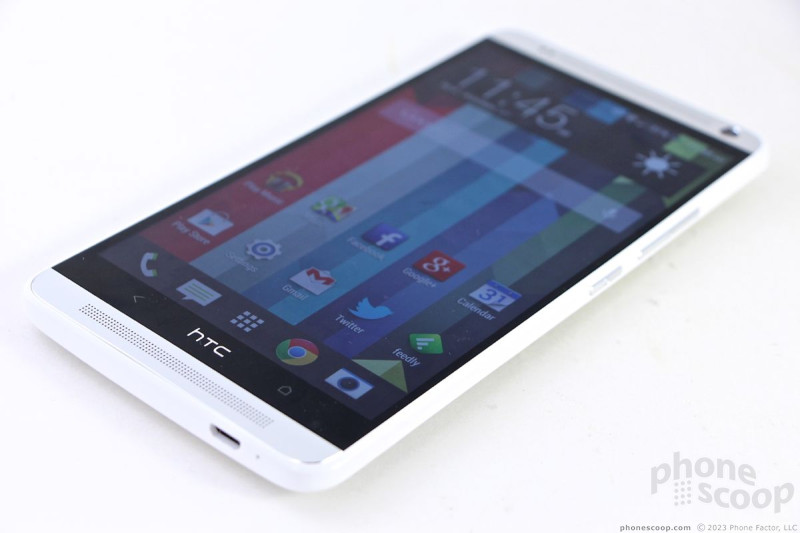






















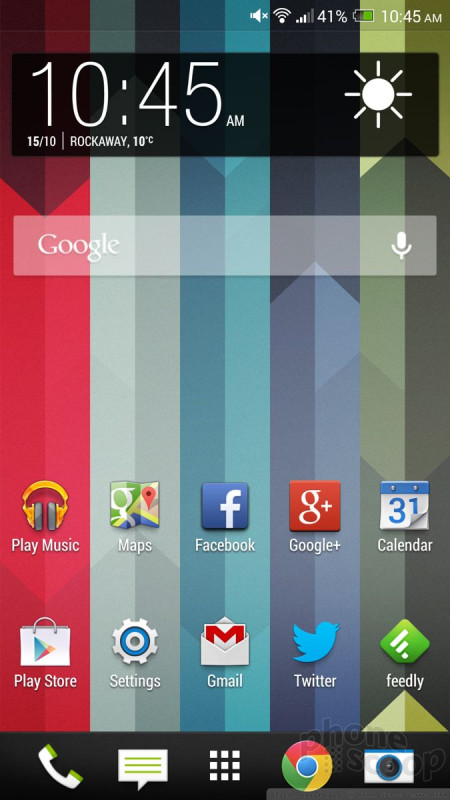






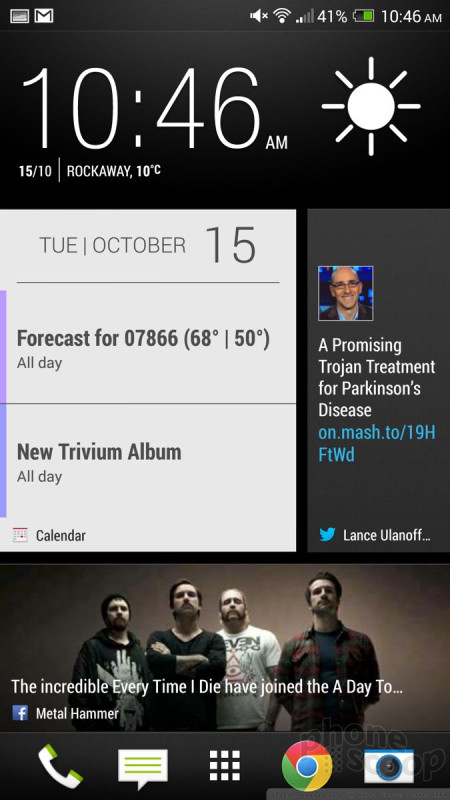







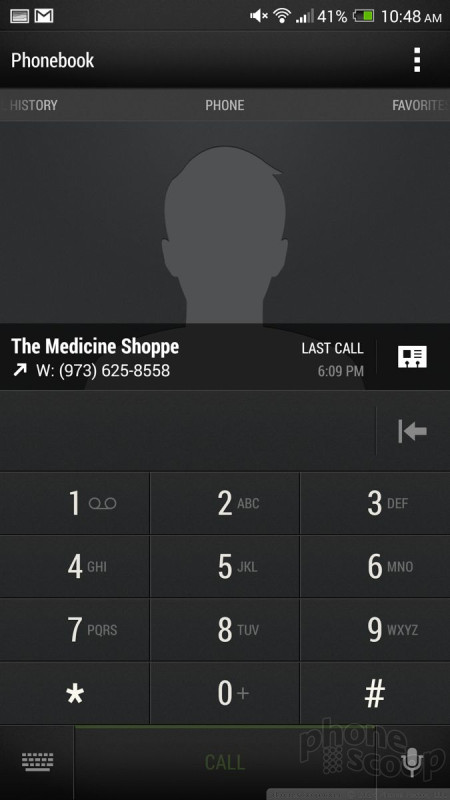



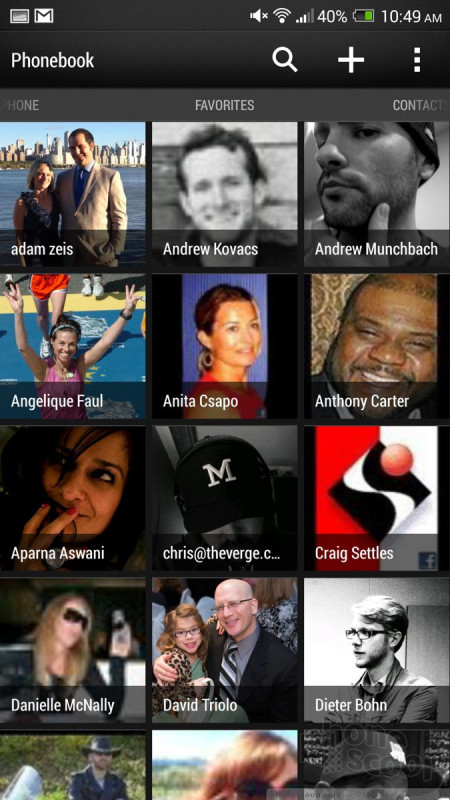











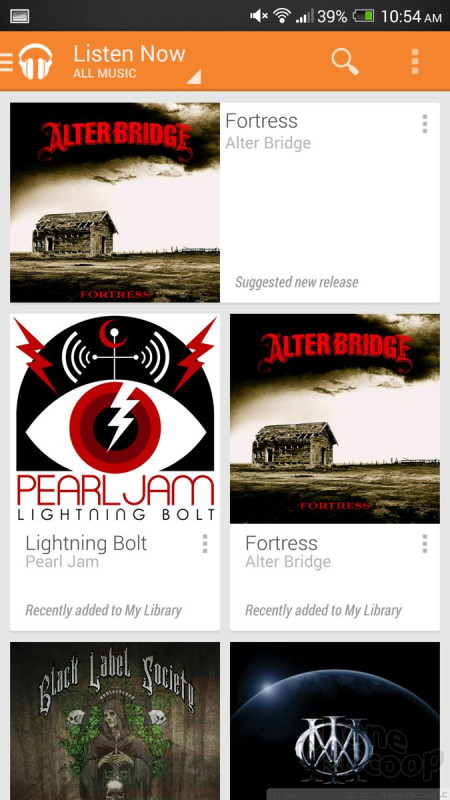





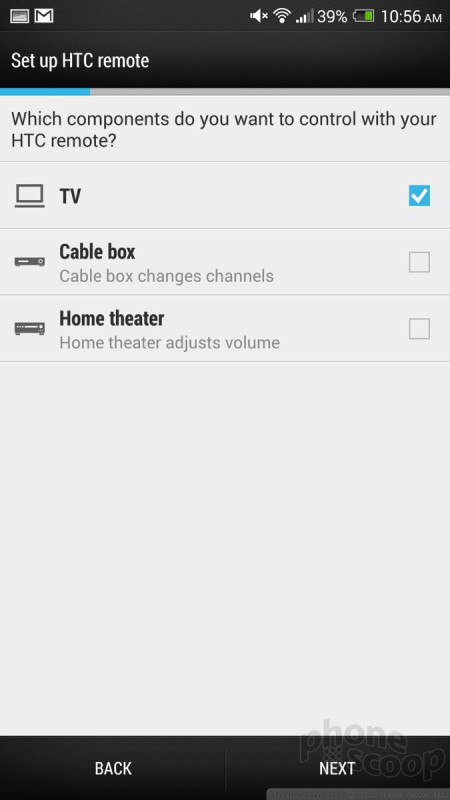





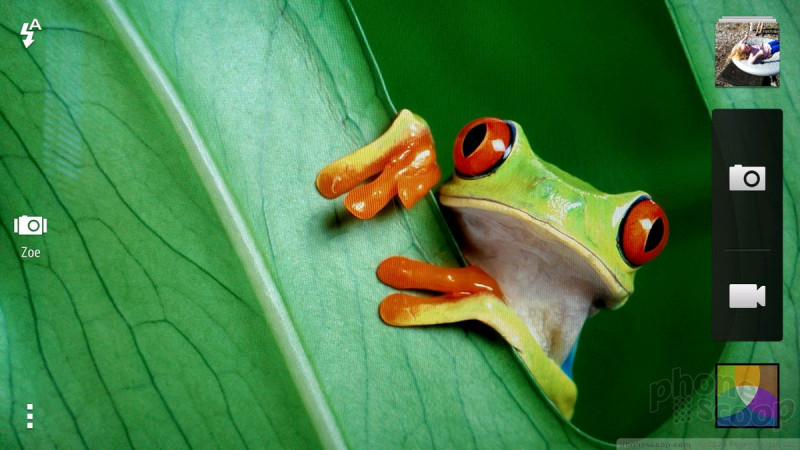




















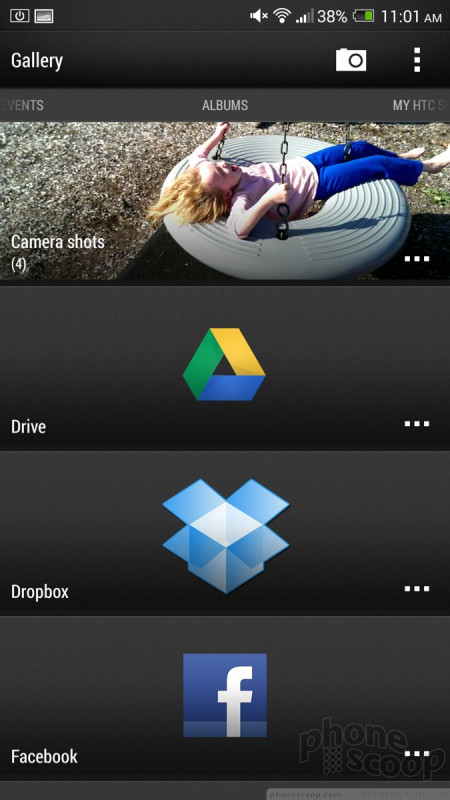






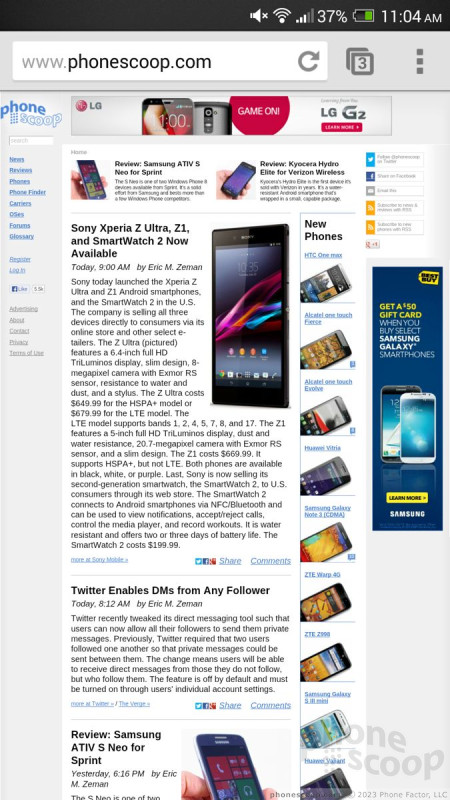




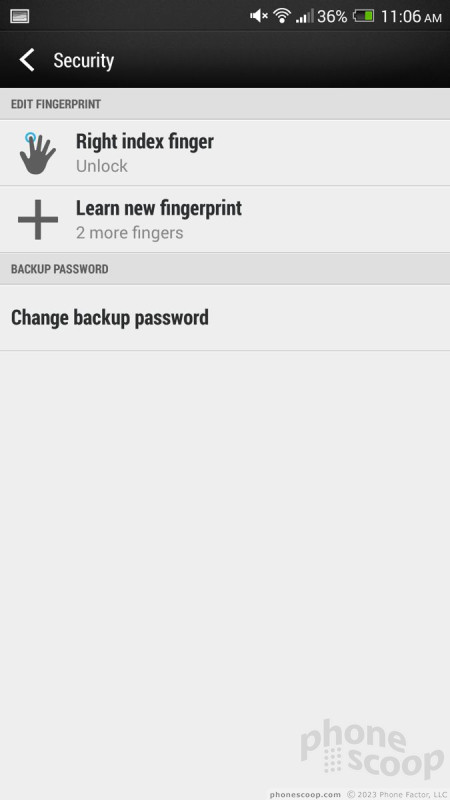






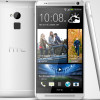 HTC Debuts the One Max with 5.9-Inch Screen and Fingerprint Scanner
HTC Debuts the One Max with 5.9-Inch Screen and Fingerprint Scanner
 HTC One max (CDMA)
HTC One max (CDMA)



